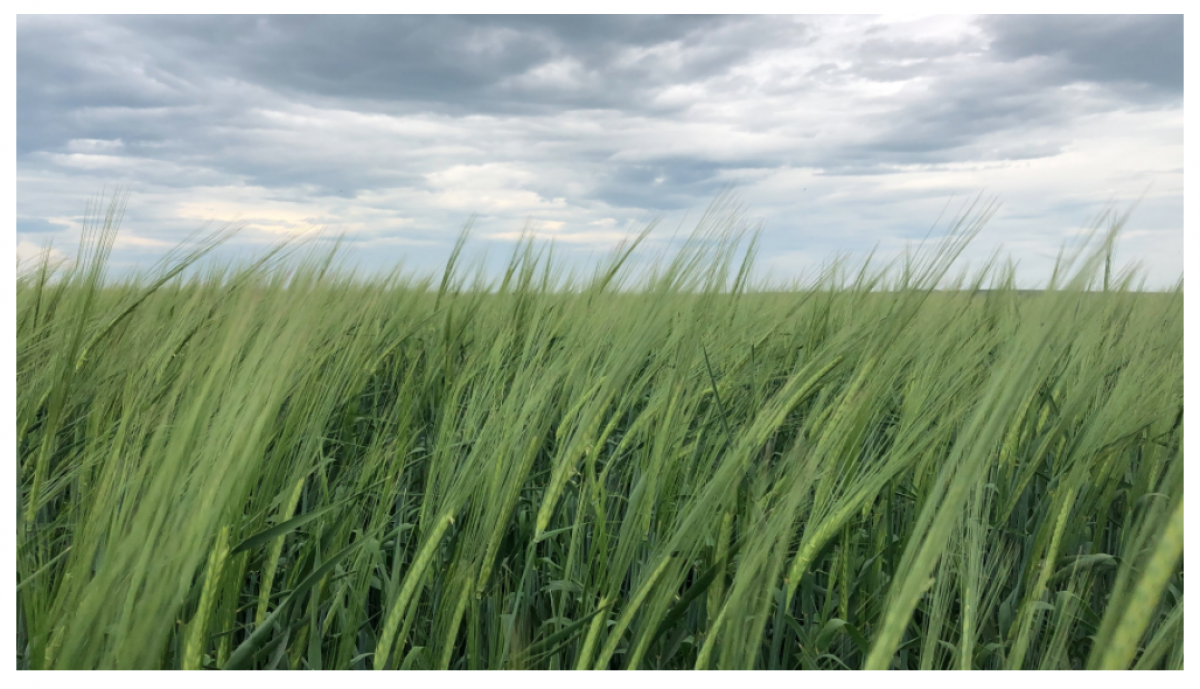What can we expect from Manipulator application on barley?
New for this season, Manipulator 620 (from Belchim Crop Protection Canada) is registered on barley. With lodging as one of the most significant factors affecting barley production in Alberta, a new plant growth regulator (PGR) is a welcomed tool for western Canadian producers.

The active ingredient in Manipulator is chlormequat chloride. It works by inhibiting gibberellin, a naturally occurring plant hormone that promotes elongation of plant cells.
Historically, the only PGR available in Canada for barley production was Ethrel (Bayer CropScience Canada). However, barley was recently removed from the product label. One PGR that may become available to Canadian barley producers in the future is Moddus (from Syngenta). Moddus also works as a gibberellin inhibitor but uses a different active ingredient known as Trinexapac-ethyl. Moddus is not currently registered on barley (or wheat) in Canada.
What can we expect from Manipulator application on barley? A recently published study by Tidemann et al. (2020) can help provide some insights. In the study, which focused on the effects PGRs had on the malt barley variety CDC Copeland, indicated variable effects of chlormequat chloride. Locations for this research included Lacombe and Lethbridge, Alberta, Indian Head and Scott, Saskatchewan, and Brandon, Manitoba.
Out of the 15 site years conducted over 2014, 2015, and 2016, three site years saw increased lodging with chlormequat chloride and decreased lodging was seen at two of the site years (Figure 1). Even when lodging was reduced, the reductions were significant but not substantial. It is important to note that the research project took significant steps to increase the risk of lodging through fertility management. These results are supported by previous studies such as Perrot et al. ( 2018) in which chlormequat chloride displayed limited effects on reducing lodging for the barley variety Amisk.
Means of lodging for chlormequat chloride and seeding rate treatments based on a lodging index. Lodging Index = S x I x 0.2 where S is the area of surface lodged (on a 1 to 9 scale where 1 = none, and 9=total), I is the intensity of lodging (on a 1 to 5 scale where 1 = upright and 5 = flat). * indicates a significant difference compared to the None treatment (compared within seeding rates where interaction is significant). Adapted from Tidemann et al., 2020.

In summary, research has indicated chlormequat chloride was not effective at reducing height or lodging of barley. This is supported by a research paper written in 2015 by Rademacher in which they described barley’s response to chlormequat chloride. "Barley is less responsive to chlormequat chloride and mepiquat chloride than wheat, rye, triticale, or oats. Therefore, products containing trinexapac-ethyl, prohexadione-calcium, or the ethylene releasing ethephon are preferentially used to reduce the risk of lodging in this species."
In addition to this, another recently published study by McMillan et al. (2020) demonstrated that use of chlormequat chloride may have negative effects on grain and malting quality of treated barley. Interestingly, this study paired with the Tidemann et al, (2020) research project by analyzing quality of the grain grown in their field research plots. Results indicated that Manipulator treated barley produced malt that had a significantly reduced extract and somewhat reduced levels of enzymes and poorer endosperm modification
If you are looking to determine the effect of Manipulator on your barley crop, ensure that you are talking to your buyer before taking any other steps. Applying Manipulator on a malt barley crop prior to consulting with your buying can lead to the crop being non-marketable. Also, if you are interested in trialing its effects on barley on your farm (still ensure you discuss this with your buyer), ensure that you leave multiple check strips to ensure you have multiple comparisons between treated and untreated. This will help you better understand Manipulators values on your farm.

